Supermicro SYS-511R-M Internal Overview
Here is a quick look inside the system to help orientation as we go through the system.
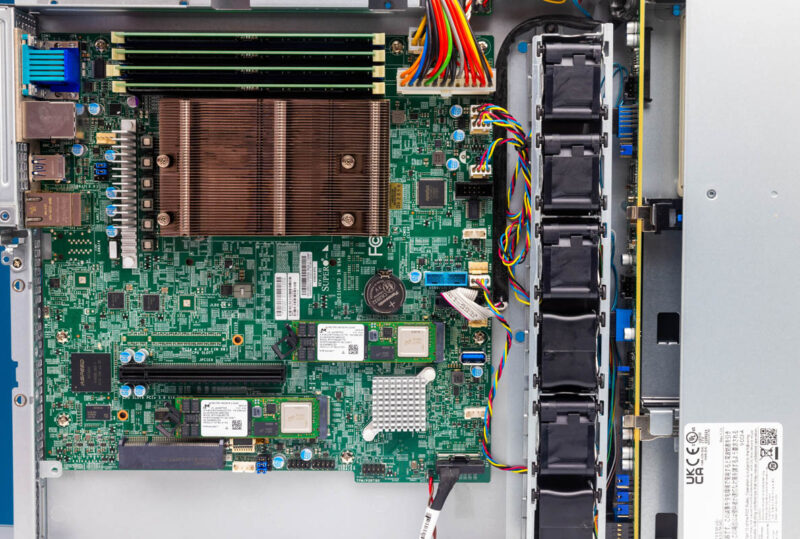
Just behind the drive bays is the fan partition.
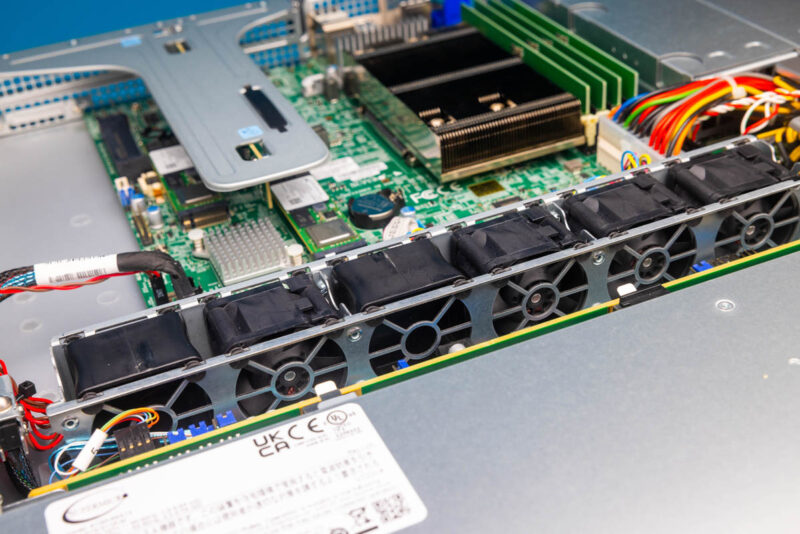
The 1U fans are 4-pin PWM controlled, but they are not hot-swappable like we see in higher-end servers.
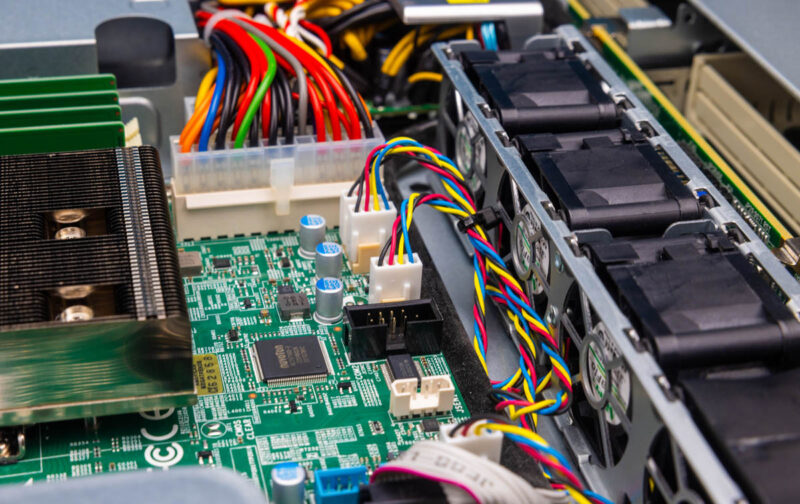
Three of these fans see most of their airflow directed to the CPU heatsink via an airflow guide.
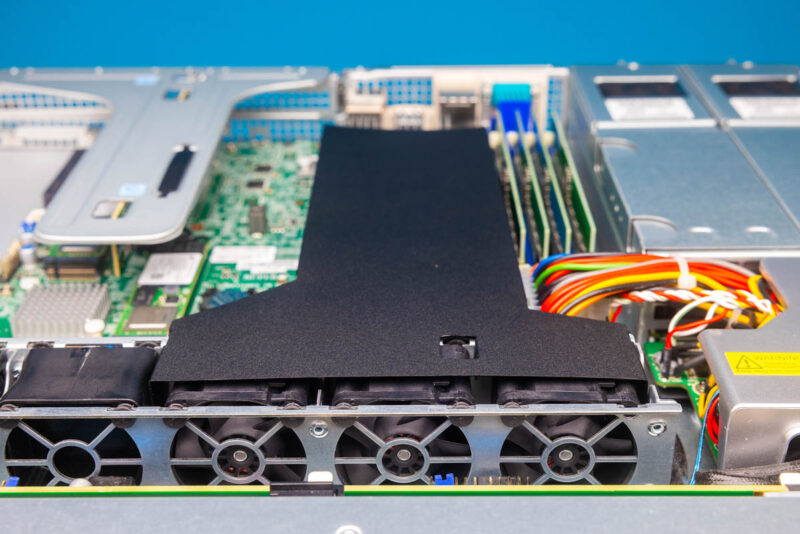
This is a LGA1700 platform (Socket V0) so the CPUs are the same size as their consumer counterparts and we get two channels of DDR5 memory and 2DPC operation.
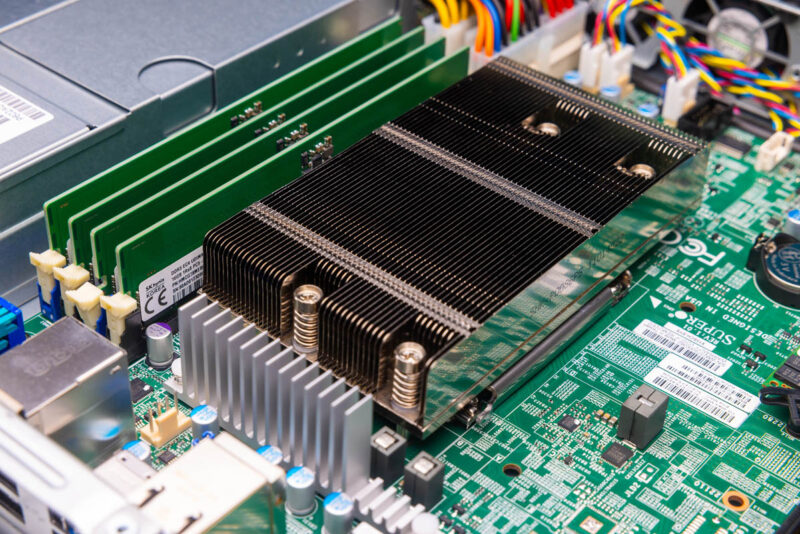
One of the fun parts of this server is the CPU heatsink. The heatsink is offset from the socket with more material towards the DDR5 slots than the other side of the motherboard. We can see that on one side, the CPU socket is exposed.
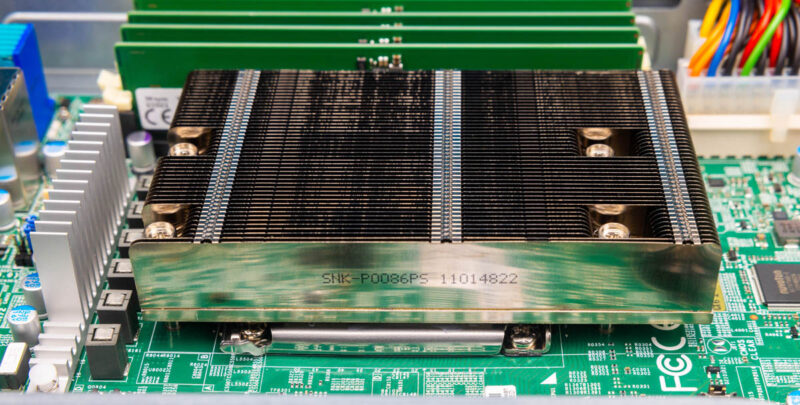
The reason for this is simple. Supermicro had limited space and could not extend the heatsink to that side if it wanted to add the low-profile expansion slot.
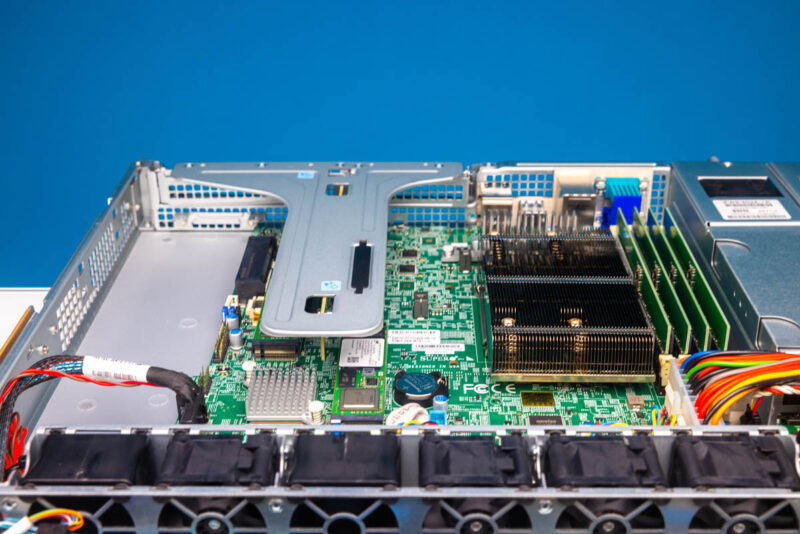
The bottom half of the motherboard is all about expansion slots, but we have the Intel C266 chipset under the heatsink.
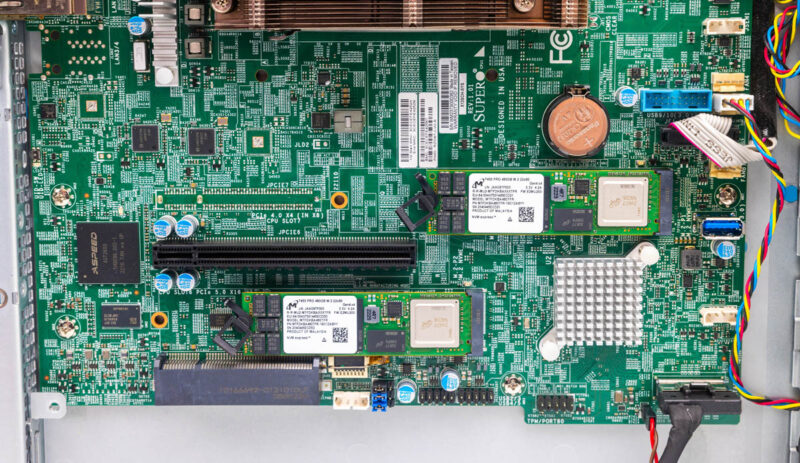
One cool feature with this generation is that there are two internal M.2 slots. Our sense is that these will be used in most deployments freeing the 3.5″ drive bays for hard drive capacity storage.
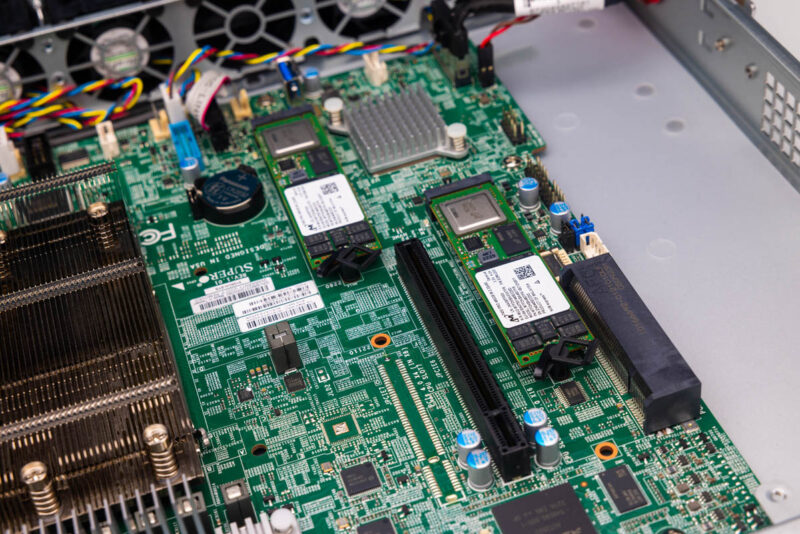
The PCIe Gen5 x16 slot is used for the riser, but then there is a slot that is designed to put an expansion card in a parallel plane with the motherboard.
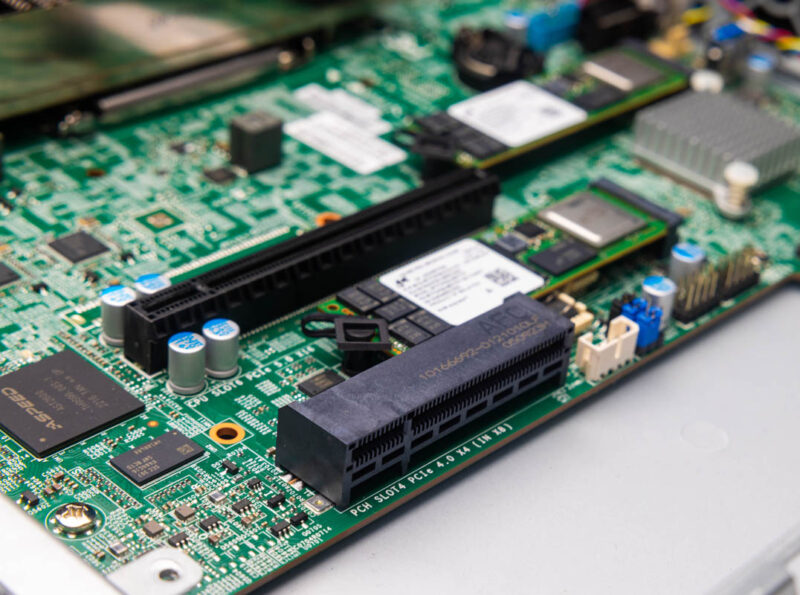
One can see the mounting screw points at the rear faceplate which give away its purpose. This is actually a PCIe Gen4 x4 slot, via the PCH, for adding a RAID controller or SAS3 HBA. Many of these single socket platforms over the last 10 or so generations were deployed for things like Windows servers, VMware ESXi, or other OSes without software RAID. So hardware RAID was used. In this system, one does not need to use a rear I/O expansion slot, nor a high-speed PCIe Gen5 slot to add SAS3 or RAID functionality.
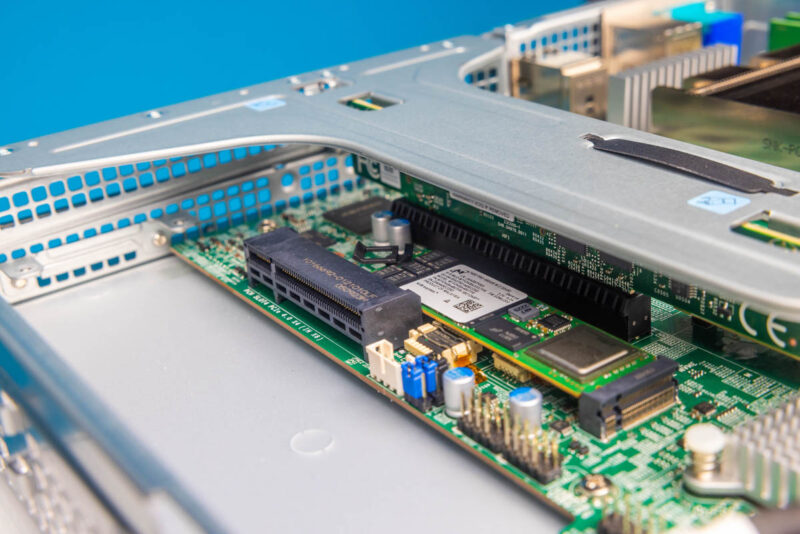
Next, let us get to the block diagram then management.




Current prices for 10 gigabit Ethernet and the limited expansion possibilities in a 1U chassis suggest systems like this should have something faster than built-in 1 gigabit Ethernet.
This server has a ton of neat little features and is very similar to the current gen of DELL 1RU servers ala R350. Love the offset CPU cooler.
Required throwaway comment: Latch that DIMM!
E3-V5/6 generation seems to be where technology peaked in terms of low idle power consumption. I have measured less than 11W at the wall with my X11SSH-LN4F (that’s for the whole system, albeit with not much attached).
Strangely, for simple homelab setups in countries where electricity is not cheap, these new boards are less desirable than the old ones.
@TurboFEM: That’s what I’m thinking, too. It looks like these days you need to go with one of these E-cores-only platforms (e.g. i3 N305) to achieve similar results, but the tradeoffs you’ll have to accept on the other hand do hurt – no ECC, limited number of PCIe lanes which are also only gen 3.
Maybe it can be accomplished with the Xeon E-2400 platform and ASPM/C-state optimisation, too?
This could be such a good platform for a home server in countries with high electricity costs…
@Patrick: What’s the noise @idle like? Do the fans ramp down enough to make it somewhat bearable?
? With ~6W on the ATX 12V cable, most of your idle power is probably being consumed by the 8 fans. Other components likely draw a bit more vs. Haswell/Broadwell: DDR5, PCI-e v4 SSD, chipset… but not that much (if you select the right SSD). The Raptor Lake is fast, but active power consumption compares poorly with (e.g.) the R7 7700, and it still has AVX-512 disabled. (As far as noise, you can build a silent machine, but naturally it takes some effort.)
The 8-core E-2300’s suffer seriously from thermal throttling which can reduce clock speeds down to as low as 3.8GHz all core, it’d have been interesting to see the E-2400 burst-temps test run for 5 minutes to see what clock speeds they settle at.
The air shroud is a necessary improvement in this system but I’m still sceptical as more air doesn’t solve the problem of poor dissipation from the IHS itself.
Do you still have the system to be able to demonstrate that?